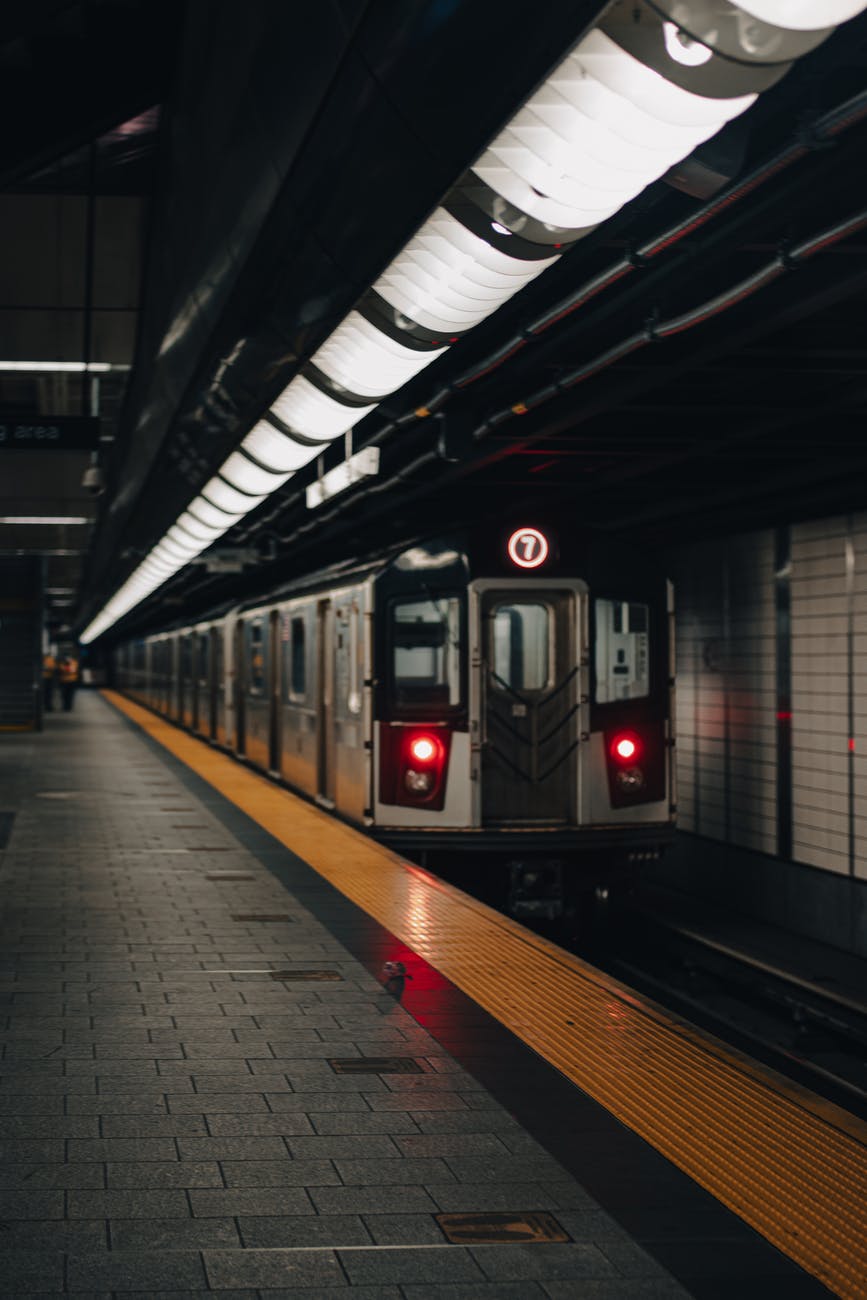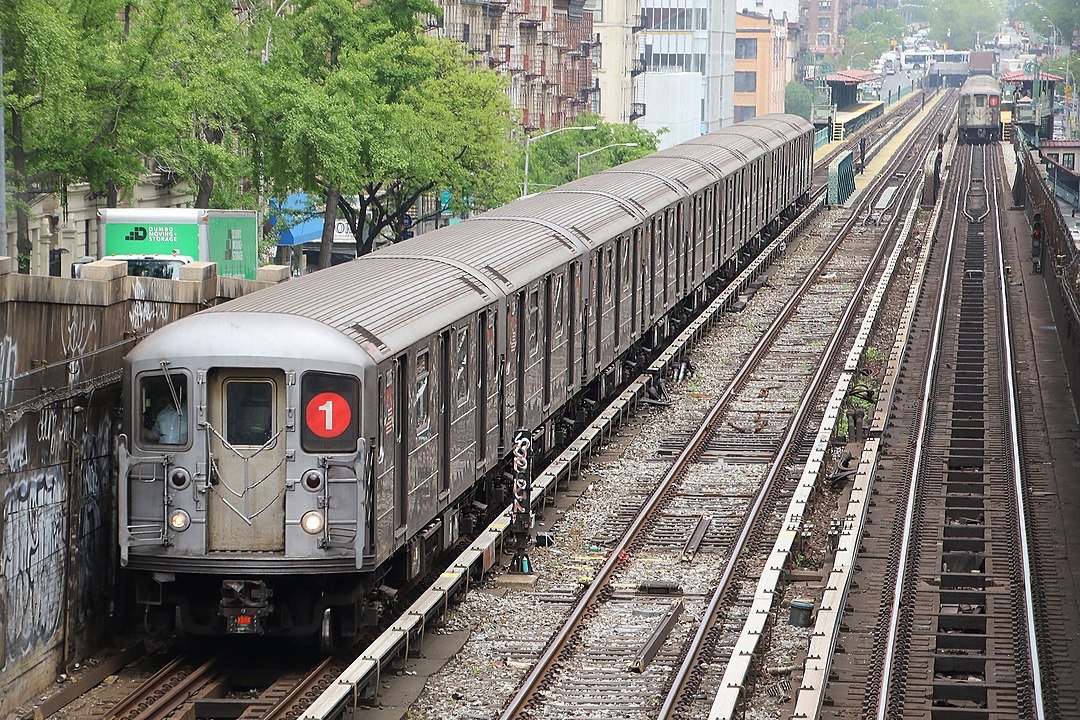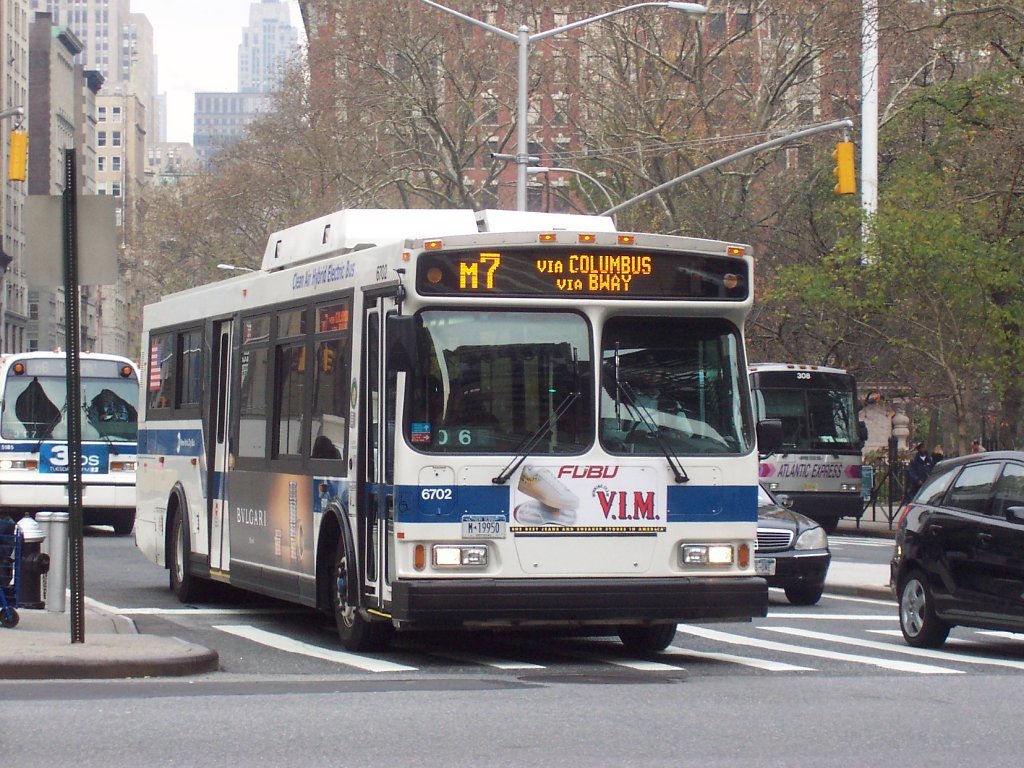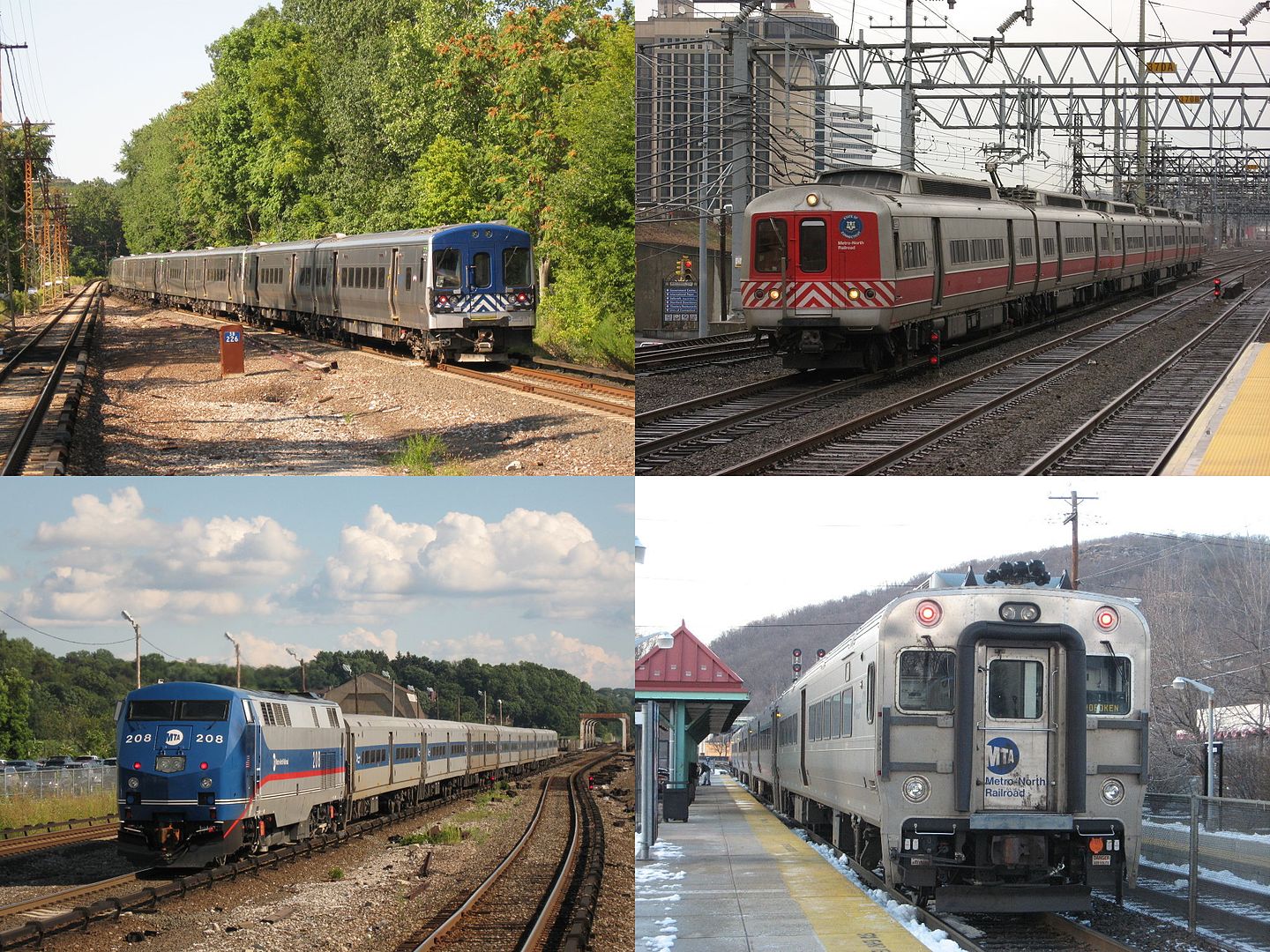Here’s why you should take the New York MTA for getting around in New York City

A few minutes every morning is all you need.
Stay up to date on the world's Headlines and Human Stories. It's fun, it's factual, it's fluff-free.
There isn’t anything quite as unifying in New York City as a mutual hatred of the Metropolitan Transportation Authority (MTA), the agency that runs public transportation throughout all five boroughs. The New York MTA is notorious for rerouting trains with little to no notice and being inaccessible to disabled New Yorkers since forever. Thankfully, MTA Finance Committee Chairman Larry Schwartz has assured New Yorkers that there will not be fare hikes for mass transit in the city until next year, as many riders continue suffering financially due to the ongoing COVID-19 pandemic.
And the NYC subway is so weird that there’s an Instagram account with over two million followers just to document all the strange people and occurrences happening on the platforms and trains. Public transportation in New York is not for the faint of heart. Sometimes, it’s probably not ideal for children either. Or the elderly.
Still, the New York MTA is iconic in its own right. As the backdrop for about a million scenes from all of the Spiderman movies and “Seinfeld” dedicating almost an entire episode to riding it, the subway is like a celebrity with cameos in all of the best pieces of pop culture. So when it comes to getting around in New York City, chances are that riding the subway is on your to-do list. And, yeah, it can be pretty fun. Plus, it runs all night, which can’t be said for the underground train systems in cities like Boston and London.
Moreover, public transportation in New York is an absolute necessity for sustainability within the city. Cities shouldn’t be built for cars, but for people; keeping air pollution at safe levels ensures that residents and visitors alike can fully enjoy the outdoors in New York for generations to come. On the subject of the environmental benefits of public transportation, TMS spoke with Christopher Gliwa, who has a Bachelor’s degree in Civil and Environmental Engineering from Princeton University, where he is currently pursuing his Master’s degree in Public Affairs.
Aside from walking or biking in NYC, Gliwa recommends taking the New York MTA. “It still causes [CO2] emissions, but it is so accessible in most areas,” he explains. “It is, in many cases, preferable to above ground, on-road transportation. This spreads out the carbon burden and reduces individual carbon footprints.”
When asked how an uptick in car usage could affect pollution levels in the city, Gliwa responds: “Vehicles that operate on fossil fuels, by nature of their design, produce emissions in the form of exhaust gases. While carbon dioxide is the most well-known of these gases, cars also emit carbon monoxide, hydrocarbons, nitrous oxides (NOx) and particulate matter, all of which have a negative effect on human health if inhaled in excess. NOx, for example, is a key component of smog production, and excessive inhalation of smog has been linked to decreased lung function and increases in asthma. More internal combustion vehicles on the road directly results in an increase of harmful emissions.”
We also asked for Gliwa’s opinion on how the New York MTA can take further steps to increase New York City’s public transit sustainability. He gave us an in-depth look at the conversations surrounding that very question.
“The greening of the MTA has been an ongoing debate for several years, but I believe it can be partly achieved through the decarbonization of their subway and bus fleets as well as the extension of the subway into New Jersey. The MTA’s plan to adopt a fully electric [transit] by 2040 is not nearly as ambitious as it needs to be, especially since the transportation sector emits the most carbon of all industries in the United States. Transitioning to a fully electric fleet has the added benefit of reducing other emissions that are harmful to humans. The subway system is also fully electric, with power provided by the New York Power Authority that, fortunately, has plans to decarbonize their power plants by 2040.
“A new congestion tax has also been proposed in New York City to both reduce traffic in lower Manhattan and to help fund the MTA; reducing congestion is undoubtedly a smart environmental choice, but the policy design disproportionately affects commuters from New Jersey, creating a de facto ‘double tax’ with the existing bridge and tunnel tolls.
“The MTA can better incentivize public transportation by extending the subway to New Jersey’s Secaucus Junction to complement existing transit options and to make public transportation commutes more attractive to those otherwise inclined to drive.”
Moreover, the more people take public transportation, the more money will go to the New York MTA. In fact, the MTA requires a certain number of riders just to preserve its budget. When the COVID-19 crisis hit New York in March of 2020, a lack of commuters and transit workers “plunged North America’s largest public transit agency into its worst financial emergency ever,” explained “The New York Times.”
Throughout the past year-and-a-half, though, the New York MTA has relied on Federal aid to keep New York’s transportation running. As of September 2, ridership has increased to about a third of its usual level, which is something of a relief. Still, more people will need to transition to public transportation if the MTA is to maintain the budget necessary for a transit system this essential.
With around 40% of the MTA’s operating revenue coming from fares, the MTA cannot afford not to have riders. While commuting itself is perhaps unnecessary for those who continue to work from home, it should be used more often as workplaces implement hybrid schedules.
As more people use public transport, the city can make necessary improvements to the system. Crucially, fares can stay relatively low with a larger ridership, keeping transit systems accessible for people of all incomes, too. There is, of course, a case to be made for making public transportation free in the city. But, while rider fare remains a New York MTA policy, it can stay low through increased ridership.
We have some insider tips for getting around in New York City on public transit that will make it at least slightly less unpleasant.
The NYC subway

The NYC subway is perhaps the handiest public transit available in New York. US$2.75 can get you anywhere in the city, and usually relatively quickly. If you don’t mind seeing a rat every once in a while – or the occasional mariachi band – then you’re most likely best off taking one of these trains for getting around in New York City.
To cut down on time and guarantee that you don’t miss your train, just pay using your phone at the turnstile. Of course, it’s always good to have a MetroCard on hand, but refilling it can be a hassle if there are lines or if the ticket machines aren’t working. As of last year, every subway station accepts Apple Pay, so you can just scan your phone at any station and jump on the next train.
Bring a book, listen to music or a podcast, or find another way to entertain yourself on the subway. If you’re going to be on the train for more than 20 minutes, spending that time with a decent read can make it go by faster. Otherwise, you might just spend the entire time staring at your phone, and we could all use a little detox from screen time.
Don’t make eye contact with any strangers. Trust us, just don’t.
Make sure your personal belongings are all secure. For example, don’t keep your phone or wallet in your back pocket, or you’re inviting them to get stolen.
Avoid getting on the subway at busy stops, like Penn Station, Port Authority, Times Square, Union Square and Columbus Circle. Instead, consider walking to the next stop on the line that you need to take if you’ve got the time. If not, just remember the eye contact thing. And the personal belongings thing. And the eye contact thing.
If you hear music or see dancing or performances by buskers that you enjoy on the platform, then stop for a moment to appreciate it. And then drop them a couple of bucks. Seriously, this is New York culture. Enjoy.
Taking the bus in NYC

There are bus stops every couple of blocks in Manhattan, so they’re easy to come by. NYC bus drivers really know how to get around, and if you want to see more of the city, taking aboveground transport may be the better option for getting around in New York City.
Many buses in the city also take Apple Pay, so that may make the experience less tedious than using a MetroCard. You can also pay with coins using exact change. Express buses – which run between boroughs – cost US$6.75 to ride, but local buses cost US$2.75.
If you need to take the bus and the subway to get to your location, no worries! Just make sure to use your MetroCard or your phone, and you won’t get charged two fares. You’ll have to scan your MetroCard or device twice, but you’ll only pay once, so long as it’s within a two-hour bracket. You can also request a printed transfer from your bus driver if you paid to get on the bus using exact change.
NYC commuter rail

New York City commuter rail consists of NJ Transit, the PATH, the Long Island Rail Road and the Metro North Railroad. These are aboveground trains to New York City usually taken from outside the metropolitan area, most often by commuters. Ticket costs range based on where you are coming from and where you’re going.
For these trains, always buy your ticket in advance. Commuter rail may even have an app you can use for e-tickets as NJ Transit does. You don’t want to be caught running late for your train without a ticket!
Before getting on your train, it’s also advisable to see if you need to transfer trains ahead of time so that you know when to alight from your current train. Commuter rail does not run all night, unlike NYC subways and buses. So, don’t get stuck far from home because you didn’t check the schedules ahead of time.
Have a tip or story? Get in touch with our reporters at tips@themilsource.com




Comments ()